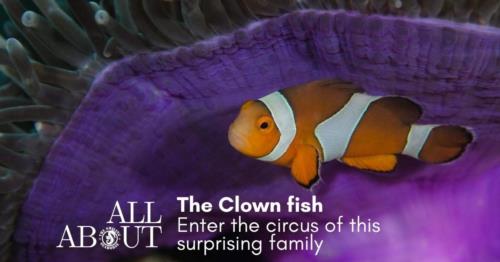
The Clown fish is an Anemone fish, a specialized type of damselfish.
The first magic trick that the clownfish is able to perform is its venom immunity: they have a special symbiosis relationship with their host anemone. Together, they realize, for your greatest pleasure, what is called a “symbiosis relationship”. Since the eggs are laid directly under its skirt, anemone fishes are immune to anemone’s stingy tentacles from day 1. It is a mutually beneficial relationship in which the anemone can feed from the fish dejection while the fish gets shelter from lurking predators.
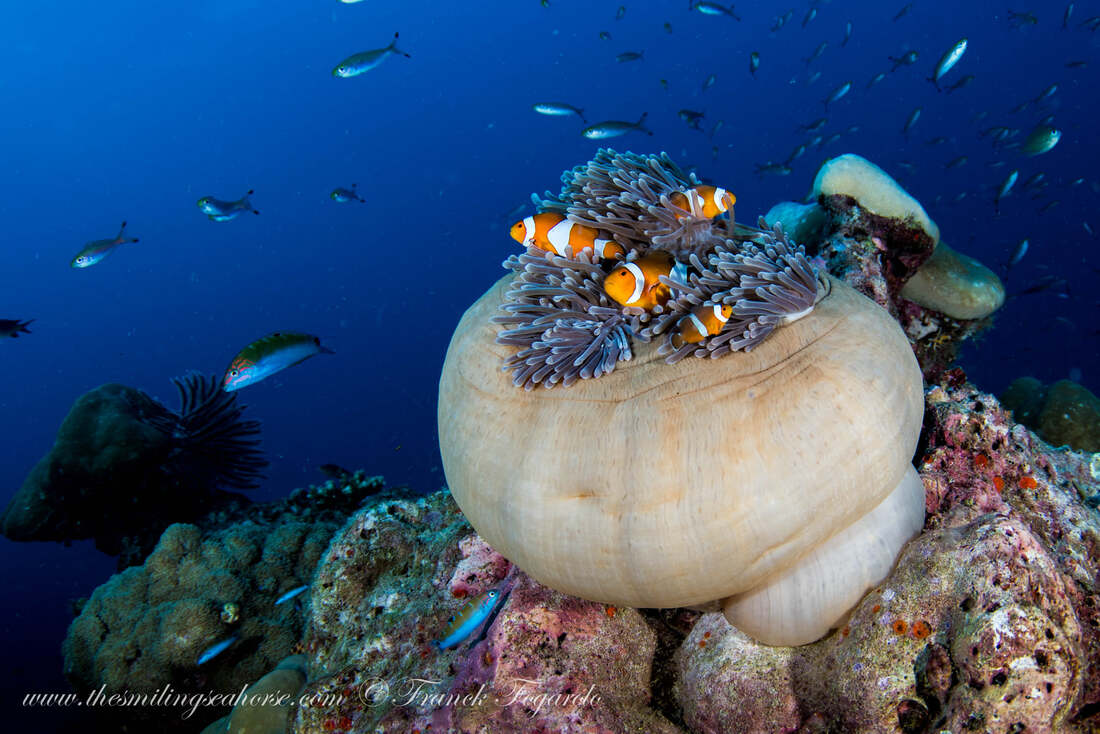
But the highlight of the show is probably its "transgender ability". All clownfish are born male with one female surrounded by a harem of smaller males. When the female leaves the group or dies, the larger male fish will become a female. Spoiler for the next episode: Nemo will never be able to have a little sister.
True Clownfish (Amphiprion percula) and False Clownfish (Amphiprion ocellaris)
False clown fish are actually the most common and well known clownfish and believe it or not but Nemo, the pixar animation’s star, is not the real deal, he is a false Clownfish!
It is actually very difficult to differentiate the true from the False Clownfish, both are bright orange with white bands separated by black lines (which are slightly thinner in the false clownfish).
Both species can be found in the Andaman Sea of Thailand.
REAL
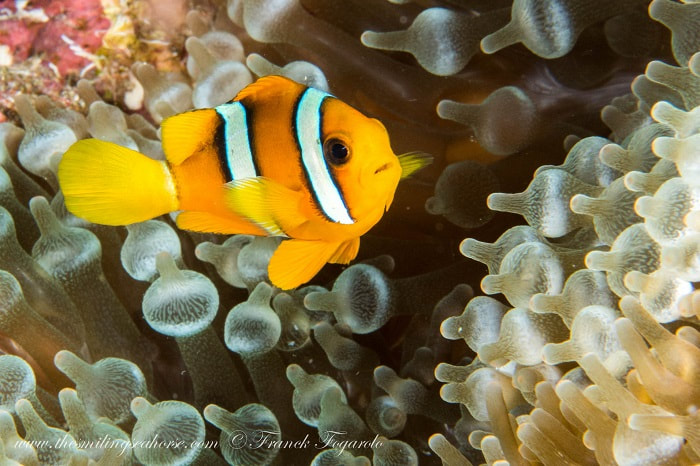
FALSE
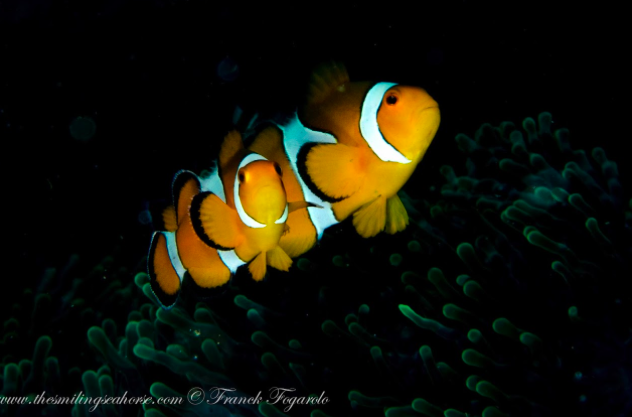
Saddle anemonefish, aka Tomato Clownfish - Amphiprion ephippium
Tomato clown fishes have an orange-red color and A. frenatus have a white vertical stripe behind the eye when they are young. The band disappears when they age and only black specks remain when they turn to females. There are several types of Tomato clownfish. Amphiprion ephippium, commonly known as Saddle anemonefish, is a medium-sized (5-10cm) anemonefish from the Tomato complex more common whendiving Myanmar.
tomato clownfish in anemone
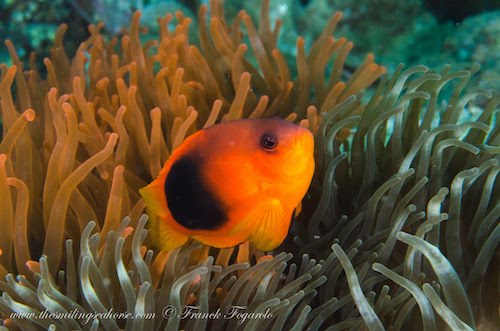
Clarks anemonefish are very distinct in look to the other anemonefish. They are a lot darker in colour with two white lines contrasted by an orange face, tail and fins.
I love clarks because they usually hover quite high over their anemone which make them easy to spot and also because they often live with anemone crabs.
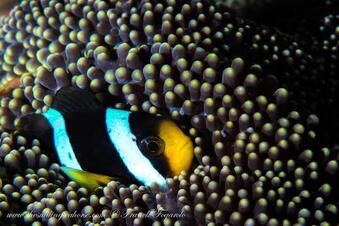
Skunk Clownfish - Amphiprion akallopisos
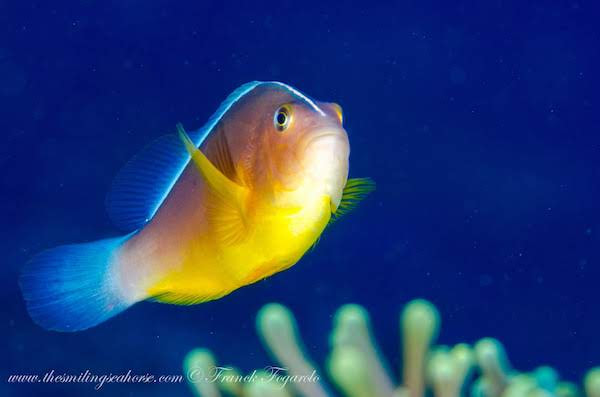
Also quite easy to identify, the Skunk Clownfish is one of the smallest anemonefish (11cm) with a white band all along its back.
Where can you see Clownfishes and anemonefishes
Habitat :Clownfish are found in the Pacific and the Andaman Sea. Different clownfish favour different anemone types. Tomato clownfish like the pretty orange bubble tip anemone while it is more common to find the clark anemonefish in the shorter carpet like anemone.
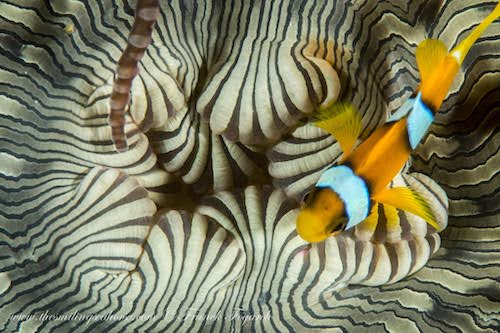
What do clownfish eat?
Clownfish are omnivorous. They feed mainly on filamentous algae, planktonic copepods and benthic crustaceans.
Reproduction
When a female is ready to mate, the male will perform a courtship and the female will deposit 400 to 1,000 eggs on the rock next or under their anemone host. The male will immediately pass over the patch to fertilize the eggs and the couple will then protect them until they hatch, in about 6 to 11 days. Babies clownfish will then drift with the current until they are big enough to swim and find an anemone to settle in.
Clownfish babies in their eggs...
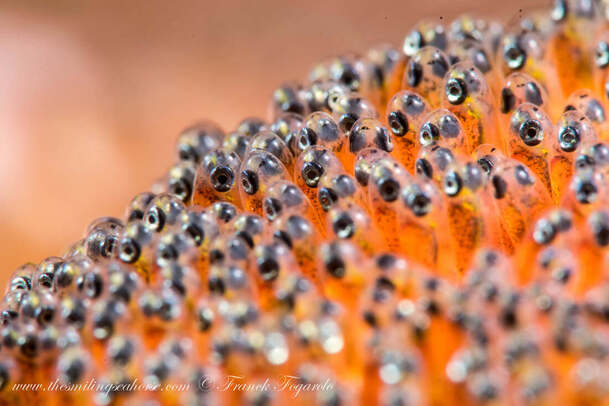
MORE ARTICLES ABOUT SEA LIFE